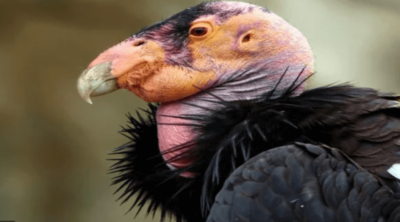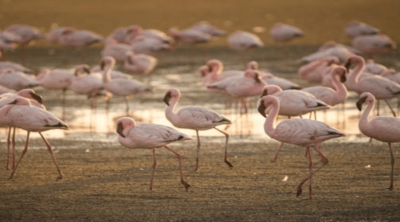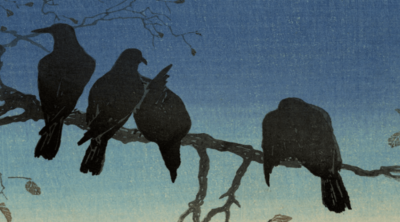
With some unique non-avian features, kiwis are the smallest among the flightless birds. Here are some interesting facts about these birds, that are native to New Zealand.
Nowadays, the term ‘kiwis’ is widely used to refer to New Zealanders. In fact, this practice started during the First World War, as the kiwi bird was featured in New Zealand regimental badges. Before the early twentieth century, very little was known about the bird, outside its native country.
However, with the launch of the Kiwi Shoe Polish in the early twentieth century, people from other parts of the world too started recognizing the bird. Now kiwi bird is a national symbol of New Zealand, and is also featured on logos of various organizations. It is a flightless bird with some interesting and unique features. However, the dwindling population of these birds is a cause of concern. According to statistics, very few are left in its natural habitat. Here are some amazing facts about the kiwi bird.
What Makes Kiwis Different From other Birds?
They are Flightless
First of all, kiwis are flightless. In fact, they have a pair of vestigial wings that are so small that they are almost invisible under the thick fur-like plumage. Unlike the birds that can fly, kiwis have no keel (an extension of the sternum, which works as an anchor for the wing muscles) and tail. Kiwis are the smallest among the flightless birds, like the emu, ostrich, and cassowary.
Long Beak with Nostrils at the Tip
As far as their nostrils are concerned, kiwi birds are unique. Unlike other birds, the nostrils of kiwis are located at the tip of the beak. In fact, it is the only bird with this feature. The beak of a kiwi bird is almost one-third the length of its body. With its amazing sense of smell, the bird uses its beak to sense the presence of prey and dig them out from the soil.
Have Heavier Bones
Usually, adult birds have hollow bones, so as to minimize their body weight. This makes their flight much easier. However, flightless birds like kiwis have heavier bones. This is due to the presence of bone marrow, which is a feature that is common in mammals. Even the young ones of other birds have bone marrow.
Largest Bird Egg in Proportion to Body Weight
Compared to their body size, kiwis lay large eggs. Their egg may amount to 20% of the body weight. Even the huge ostriches lay eggs that are only 2% of their body weight. While the size of a kiwi is almost similar to a domestic chicken, its egg could be more than six times the size of a regular chicken egg. The weight of the largest kiwi egg ever recorded is 500 gm. Most birds have a single functioning ovary, while kiwis have two ovaries.
Kiwi Bird Taxonomy
Species of Kiwi Birds
~ The great spotted kiwi (Apteryx haastii)
~ Little spotted kiwi (Apteryx owenii)
~ Okarito brown kiwi (Apteryx rowi)
~ Southern brown kiwi or Tokoeka (Apteryx australis)
~ North Island brown kiwi (Apteryx mantelli)
Difference in the Kiwi Species
Among these five species, the Southern brown kiwi has two sub species. While the great spotted kiwi is the largest species, the little spotted kiwi is the smallest one. Compared to other species, the North Island brown kiwi is most commonly found in its native country. Kiwi birds are unique in their physical features, habitat, and habits. Owing to these factors, these flightless birds are considered closer to mammals, than to birds.
What Does a Kiwi Look Like?
In General
The distinct features of this flightless bird are the fur-like plumage, long beak, and lack of wings and tail. Their body size, color of plumage, and other features may vary slightly from one species to another.
Size
The size of a kiwi is almost similar to a domestic chicken. The largest species, the great spotted kiwi may have a body weight of 1.5 to 3.3 kg in females and 1.2 to 2.6 kg in males. The smallest species is the little spotted kiwi, with a body weight that can range between 1 to 1.9 kg (females) and 0.9 to 1.3 kg (males). The great spotted kiwi can have a maximum height of 18 to 20 inches, and the little spotted one can grow up to 30 centimeters (11 inches) in height.
Plumage
In general, these birds have a grayish-brown plumage. The great spotted kiwi has black spots on its plumage, and hence the name. While the little spotted kiwi has a mottled pattern, the plumage of North Island brown kiwi has a spiky appearance. Okarito kiwis are mostly light gray in color, and some individuals have white feathers on their face.
Other Features
A kiwi bird has a pear-shaped body with a small head, short neck, slender and long beak, and strong, stocky legs. Each foot has three toes, which are often used for digging and tearing. Most of these birds have whiskers around the beak and it is believed that the whiskers help them in navigation during the night. They have small eyes and a poor vision. But the sense of smell and hearing is very good.
Habitat and Diet
Where are They Found?
Kiwi birds are natives to New Zealand, an isolated island, so, these birds could not migrate to other regions. Another factor that hindered their migration is their flightless nature. As the names rightly suggest, the North Island brown kiwi is mainly found in the North Island and the Southern brown kiwi lives in the South Island and Stewart Island.
The great spotted kiwi is found in some regions of the South Island, whereas the Okarito brown kiwi inhabits a small area in the Okarito forest on the South Island. The little spotted kiwi is found in Kapiti island and some nearby areas.
Unlike other birds, they dig burrows with their strong feet. They sleep in their burrows throughout the day and search for food during night. Usually, kiwis are found in damp forests (especially subtropical and temperate podocarps, and beach forests), but some species are found in grasslands and scrublands too.
What do They Eat?
Their eyesight is poor and they use their keen sense of smell to find prey, like worms, spiders, insects, caterpillars, snails, freshwater crayfish, frogs, and grubs. The long slender bill with external nostrils help them in searching food. Kiwi bird diet includes leaves, berries, and seeds too. The body temperature of kiwis is around 38 °C, which is almost two degrees lower than that of other birds, but slightly higher than humans.
Behavior
In General
Kiwi birds are usually nocturnal, secretive, and very shy. They have very strong legs, and can smartly outrun humans. These birds can also fight their enemy with strong legs, which are mainly used for kicking and slashing.
Mating
Kiwis are mostly monogamous; they mate for life. In short, a kiwi couple can be together for their entire lives – around 20 to 30 years. In captivity, male kiwis reach sexual maturity in 18 to 20 months, while females start mating after 3-4 years of age. The female great spotted kiwi lays a single egg, after every mating season. However, the clutch size may vary between one to three, in other species. The period of gestation is around a month and the eggs take 70 to 90 days to hatch.
Males do the Incubation part
In Okarito kiwis, both parents are involved in incubation of eggs, whereas in all the other four species, only the males are responsible for this task. This may sometimes result in the male losing almost one-third of its body weight, once the task is over. While some species look after the young ones for a few weeks after hatching, others may abandon the chicks, as soon as the eggs hatch.
Other Facts
Why the name Kiwi
There are two theories behind the name ‘kiwi’. One theory suggests that it is derived from the Polynesian name for the bristle-thighed curlew, the Kivi, which is a bird with long beak, and possess the same feeding habits of kiwis. Another contention is that kiwi birds are named after their shrill cry ‘kee-wee kee-wee’.
Lifespan
The average lifespan of a kiwi bird is said to be around 30 to 40 years, but this may vary with different species. Some may live up to 80 years of age.
Declining Population of Kiwis
Even though, these birds existed for millions of years without any threat, the movement of settlers into the island resulted in their habitat loss. Another reason for their declining population is introduced predators, like dogs. Many programs are underway to protect kiwi birds, which are on the verge of extinction.
Extinct and Endangered Species
While species like little spotted kiwi (Apteryx owenii) is listed by the IUCN as ‘near threatened’, great spotted kiwi (Apteryx haastii) and Southern brown kiwi (Apteryx australis) come under the category ‘vulnerable’. North Island brown kiwi (Apteryx mantelli) is listed as ‘endangered’ species, and Okarito kiwi (Apteryx rowi) is ‘critically endangered’.













